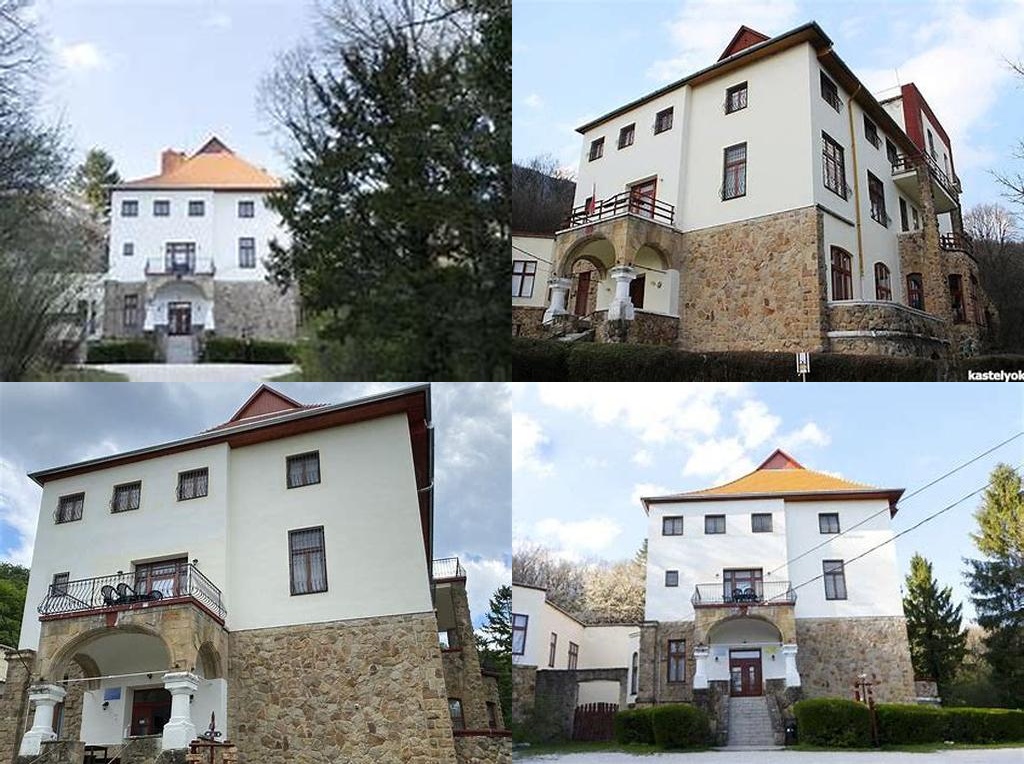
Orosdy-kastély is one of those alluring finds that quietly sits on the outskirts of Budapest, in the small, leafy community of Pilisszántó. Like many grand country houses dotting the Hungarian countryside, it straddles the line between myth and memory, bearing beautiful decay and subtle grandeur in equal measure. Yet unlike more celebrated castles that appear in glossy travel brochures, Orosdy-kastély feels more intimate—a space with stories pressed into the floorboards and cool air, still lingering in its overgrown gardens. This is not a tourist trap. In fact, it feels almost like a well-guarded secret, a place for those who like their history wrapped in the quiet of nature and a sprinkle of intrigue.
The mansion was built in the final decades of the 19th century, at a time when sweeping changes were underway in Hungary, following the 1867 Compromise with Austria. Its name comes from Count Orosdy Frigyes, a fascinating figure who added layers of cosmopolitan charm and Hungarian rootedness to the house. Step inside—or simply gaze at the structure—and you’ll catch glimpses of a life lived fully, a reflection of shifting tastes of the Hungarian nobility during the era. The Orosdy family was known for both their political engagement and artistic tastes; under their aegis, the mansion bloomed with culture. High-ceilinged salons hosted lively gatherings, and lush gardens in the English style made the mansion a landmark of style and comfort. The Orosdy family fortune may have faded with time, but their spirit endures in architectural flourishes: the intricate woodwork on the staircases, stonework suggestive of Alpine influences, and windows that seem to look both inward and toward the sprawling hills of Pilisszántó.
The narrative of Orosdy-kastély doesn’t stop at aristocratic ballrooms. Following significant changes after World War II, the fate of many Hungarian estates became uncertain, and Orosdy-kastély was no exception. Like so many grand homes, it took on new roles: a children’s camp, a state-run sanatorium, even a home for various cultural organizations. This multi-layered past gives the place a distinctive atmosphere—you can sense echoes of laughter in the main hall, as well as whispers of reflective silence from the old library. During the latter half of the 20th century, the castle was somewhat neglected, but even in this sleepier period, local legends flourished. Stories abound of midnight walks in the gardens, overgrown trails where wildflowers burst through the old gravel, and musicians drifting through for gatherings as informal as they were memorable.
What truly distinguishes Orosdy-kastély, especially from the perspective of a modern visitor, is its setting. Unlike some castles that dominate their landscape, this mansion seems to draw you gently into a microcosm of tranquility. Bordered by ancient trees and backed by the serene slopes of the Pilis Hills, the place changes with the seasons: mists in spring, buzzing life in summer, a blushing gold in autumn, and a hush of snow in winter. Painters, poets, local schoolchildren, and travelers all find a quiet inspiration here. Occasionally, you might see sketches tacked up to the perimeter fence, the results of impromptu art classes, or stumble across an open-air poetry reading among the wild grass.
If you are a lover of history, architecture, or simply enjoy wandering in spaces where the past and present seem thinly separated, Orosdy-kastély makes for a restorative detour. There’s no velvet rope to hold you back—you can explore at a contemplative pace, imagining the bygone days of stately dances or the more recent gatherings that sustained the house in straitened times. For those willing to venture on less-traveled paths, a visit often starts with a walk along the residential streets of Pilisszántó, climbing gently toward the hills. Here, the view opens up and the mansion appears, at once sturdy and elegant, set apart from the rush of time.
Count Orosdy Frigyes may never have imagined that his home would survive decades of transformation, let alone entrance twenty-first-century wanderers with such subtlety. Yet here it stands, still inviting discovery. If you find yourself in Hungary, looking for a place that whispers rather than shouts about heritage—where nature and memory intermingle—Orosdy-kastély should most definitely be on your list. It’s proof that history doesn’t always need restoration to work its spell; sometimes, a little faded elegance and honest solitude tell the most vivid stories.





